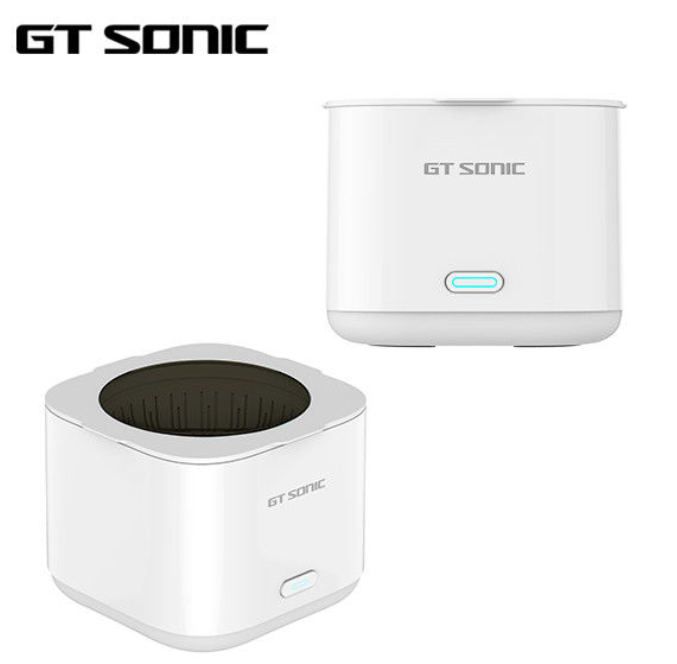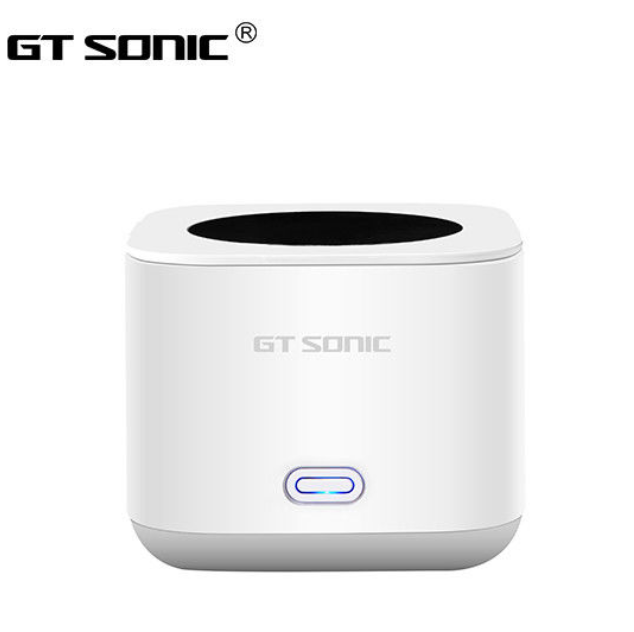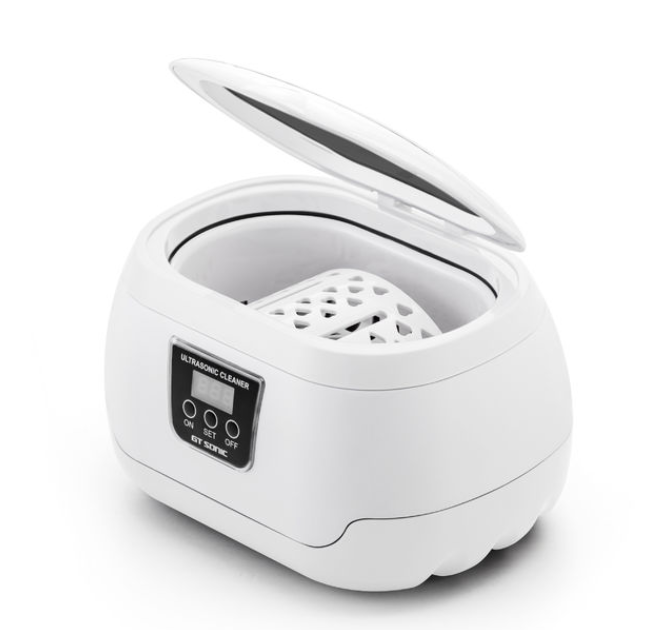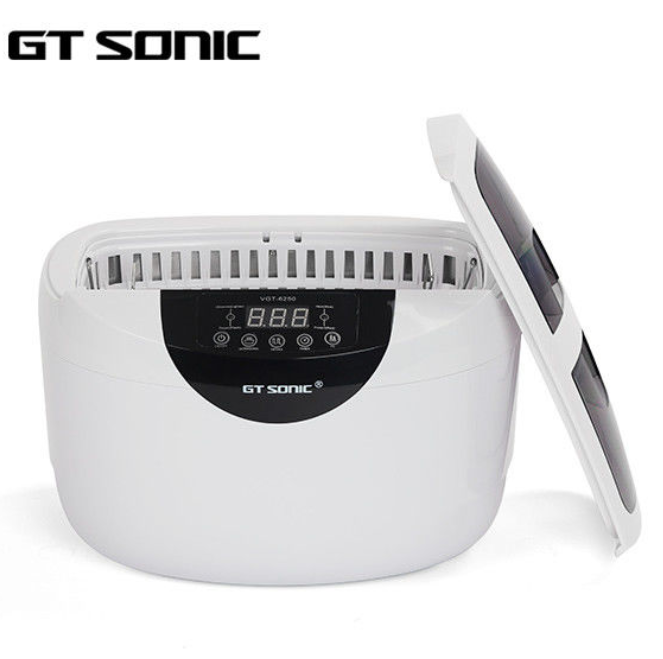Do Ultrasonic Retainer Cleaners Work?
2025-11-21
In recent years, ultrasonic retainer cleaners have gained popularity as an effective and efficient way to clean retainers, braces, and other dental appliances.
In recent years, ultrasonic retainer cleaners have gained popularity as an effective and efficient way to clean retainers, braces, and other dental appliances. The question that many professionals in healthcare—particularly orthodontists, dentists, and clinics—are asking is: Do these ultrasonic cleaners really work? Are they worth the investment for a busy practice? In this blog, we’ll explore how ultrasonic cleaners work, why they’re beneficial in healthcare, and what to consider when choosing the right ultrasonic retainer cleaner for your clinic or hospital.
What is the best ultrasonic retainer cleaner?
-How do ultrasonic retainer cleaners work?
-Which way to put a retainer in an ultrasonic cleaner?
Why is an ultrasonic cleaner important in healthcare?
Types of Ultrasonic Cleaning Equipment for Retainers
-Good ultrasonic cleaner for clinics
-Ultrasonic cleaning machine vs. Ultrasonic cleaner tank
-Professional ultrasonic cleaner
Advantages of using ultrasonic dental cleaner in healthcare settings
GTSONIC ultrasonic cleaner machine: best ultrasonic cleaner for dental instruments
What is the Best Ultrasonic Retainer Cleaner?

When searching for an ultrasonic retainer cleaner, the "best" option largely depends on your clinic's needs and the volume of appliances to be cleaned. Ultrasonic retainer cleaners vary by size, power, and features. The ideal ultrasonic cleaner should:
1.Provide consistent results with minimal human intervention.
2.Be able to handle high-volume cleaning, especially for clinics with many patients.
3.Be easy to maintain and offer cost-effective operation over time.
4.Incorporate adjustable settings, such as frequency control, for optimal cleaning based on the material of the retainer.
Typically, a professional-grade ultrasonic cleaner for clinics will have a larger tank, higher frequency options, and a more durable design to withstand frequent use.
How Do Ultrasonic Retainer Cleaners Work?
Ultrasonic cleaners use high-frequency sound waves to agitate a cleaning solution, creating tiny bubbles in the liquid. These bubbles implode, producing microscopic scrubbing action that effectively loosens dirt, debris, bacteria, and other contaminants from the surface of the retainer. This process, called cavitation, ensures a deep and thorough cleaning, even in hard-to-reach areas.
For retainers, ultrasonic cleaners can remove plaque, food particles, and even stubborn stains without causing damage to the appliance. Since ultrasonic cleaning is a non-invasive process, it helps maintain the integrity of the retainer while achieving a high level of hygiene.
Which Way to Put a Retainer in an Ultrasonic Cleaner?
When using an ultrasonic cleaner for retainers, it's essential to place the retainer correctly for the best results. Here are some guidelines:
1.Submerge the Retainer Completely: Make sure the retainer is fully submerged in the ultrasonic cleaning solution. This ensures the cleaning waves are uniformly applied to the entire surface.
2.Use a Basket or Tray: Many ultrasonic cleaners come with a basket or tray to hold the retainer. This prevents direct contact with the tank's surface, reducing the risk of scratches or damage.
3.Avoid Contact with Other Items: If you’re cleaning multiple items at once, make sure the retainer is not touching other objects, as this can affect the cleaning performance and result in less efficient results.
By following these simple tips, you’ll ensure that your retainer gets the best possible cleaning.
Why is an Ultrasonic Cleaner Important in Healthcare?

Ultrasonic cleaning is not only effective for cleaning dental appliances, but it also plays a significant role in infection control and patient safety in healthcare settings.
`1.Hygiene and Infection Prevention
One of the primary benefits of using an ultrasonic cleaner in healthcare is its ability to eliminate bacteria and pathogens. This is especially critical in orthodontic clinics and dental practices, where retainers and other appliances are in direct contact with the mouth. Proper cleaning ensures that cross-contamination is minimized, which can reduce the risk of infections.
2.Efficiency and Time Savings
Dental and orthodontic offices often deal with high volumes of retainers, making it essential to have a reliable and time-efficient cleaning solution. An ultrasonic cleaner can clean multiple retainers in a short amount of time, which allows clinics to stay productive without compromising on hygiene.
3.Preserving the Quality of Retainers
Ultrasonic cleaning is gentle on retainers, ensuring that they remain in good condition for longer. Unlike manual scrubbing, ultrasonic cleaning won’t cause wear and tear, helping retainers last longer and maintain their effectiveness.
Types of Ultrasonic Cleaning Equipment for Retainers

When selecting an ultrasonic cleaning system for your clinic or hospital, it’s essential to consider the different types of ultrasonic cleaners and how they fit your needs.
Good Ultrasonic Cleaner for Clinics
Ultrasonic cleaning units for clinics are designed to handle high volumes of cleaning with durability and efficiency. These units typically feature:
1.Larger tanks to accommodate multiple retainers.
2.Adjustable power and frequency settings for customized cleaning.
3.Built-in heating functions to help break down oils and debris.
For orthodontic and dental practices, large ultrasonic cleaners are ideal because they can clean a batch of retainers at once, reducing wait times for patients. A compact ultrasonic cleaner, on the other hand, may be suitable for smaller clinics with fewer patients.
Ultrasonic Cleaning Machine vs. Ultrasonic Cleaner Tank
There’s a key distinction between an ultrasonic cleaning machine and an ultrasonic cleaner tank.
1.Ultrasonic Cleaning Machine: This is a more comprehensive solution that integrates a powerful transducer system capable of producing high-frequency sound waves. It often includes multiple cycles for different cleaning needs and adjustable settings for various materials.
2.Ultrasonic Cleaner Tank: Typically a more basic model, this is just the container where you submerge the retainers in a cleaning solution. It might not have as many advanced features, but it can still offer effective cleaning for less demanding environments.
Hospitals and clinics with higher traffic should consider investing in a full ultrasonic cleaning machine with advanced features, while smaller practices may find that a tank-style cleaner is sufficient.
Professional Ultrasonic Cleaner
A professional ultrasonic cleaner designed for dental and orthodontic use often comes with customizable features, such as adjustable frequency and power. This is especially important for clinics that want to maintain control over the intensity of the cleaning process.
1.Adjustable frequency: This allows professionals to customize the cleaning intensity based on the material of the retainer or dental appliance.
2.Integration with existing systems: Many professional ultrasonic cleaners can integrate with a clinic's existing sterilization and cleaning systems, improving efficiency.
For clinics or hospitals that demand high-performance cleaning equipment, investing in a professional ultrasonic cleaner ensures long-term reliability and high-quality results.
Advantages of Using Ultrasonic Dental Cleaners in Healthcare Settings

The benefits of using an ultrasonic cleaner in dental and orthodontic practices are numerous:
Efficient Cleaning: Ultrasonic cleaners offer quick and consistent results, reducing cleaning time and increasing practice productivity.
1.Deep Cleaning: They provide a level of cleaning that manual scrubbing simply cannot achieve, especially in hard-to-reach areas.
2.Hygienic and Sterile: Ultrasonic cleaners can remove plaque, bacteria, and food debris, helping to maintain high standards of hygiene.
3.Cost-effective: While the initial investment may be higher, ultrasonic cleaners reduce labor costs and improve the overall cleanliness of dental appliances, helping to avoid the costs of potential contamination or re-cleaning.
GTSONIC Ultrasonic Cleaner Machine: Best Ultrasonic Cleaner for Dental Instruments

One of the top-rated ultrasonic cleaning machines in the market is the GTSONIC ultrasonic cleaner machine. Specifically designed for dental instruments and appliances, GTSONIC offers the following features:
1.Large cleaning capacity: Can clean multiple retainers and dental instruments simultaneously.
2.Adjustable settings: With adjustable frequency and temperature, it allows for customization based on cleaning needs.
3.Durability and reliability: Built for long-term use, the GTSONIC cleaner is designed to withstand high-volume usage in busy clinics and hospitals.
Clinics looking to improve the efficiency and effectiveness of their retainer cleaning process should seriously consider investing in the GTSONIC ultrasonic cleaner.
Conclusion
In conclusion, ultrasonic retainer cleaners are highly effective tools for maintaining the cleanliness and hygiene of dental appliances. Whether you're managing a busy orthodontic practice, dental clinic, or hospital, using an ultrasonic cleaning system can help save time, improve patient satisfaction, and ensure high standards of hygiene. By understanding how these devices work and choosing the right model for your needs, you can enhance your practice’s workflow and provide better care for your patients.
Recommended Reading:
1.Five Best Ultrasonic Retainer Cleaners Recommended
2.Top 5 Best Ultrasonic Cleaners for Dental Instruments: Effective Cleaning Solutions
3.GTSONIC Ultrasonic Cleaner for Dental Instruments: Ideal for Clinics and Laboratories










